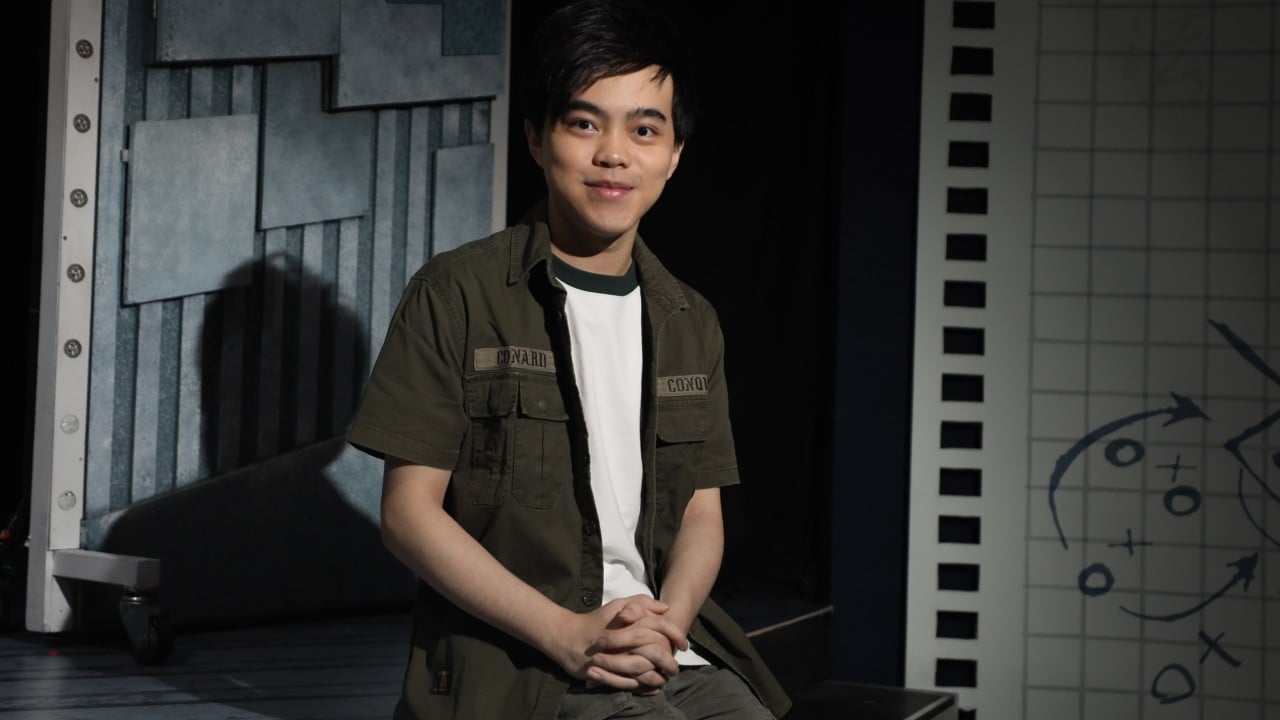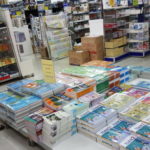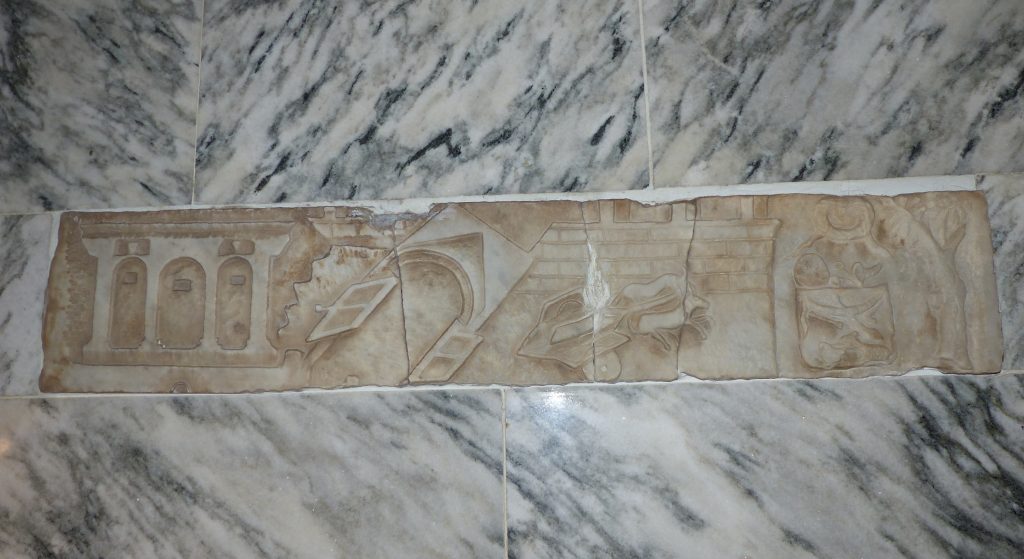BC/AD
2008 - Film & Video (Film & Video)
59 min 36
Ian Breakwell
“BC/AD” (Before Cancer, After Diagnoses) is a video of photographs of the artist’s face dating from early childhood to the month before he died, accompanied by the last diary entries he wrote from April 2004 to July 2005 (entitled “50 Reasons for Getting Out of Bed”), from the period from when he lost his voice, thinking he had laryngitis, through the moment he was diagnosed with lung cancer and the subsequent treatment that was ultimately, ineffective. The diary entries are at once poignant, ironic, laced with gallows of humor, with his continued eye for the little incidents in life, interweaving the past with his experience of the present. The morphing of the portraits—the eyes and sight remaining leveled—is haunting, beginning with very blurry images of childhood and ending with a pin-sharp photograph of Breakwell the month before he died. As the tumor grows so does Breakwell’s introspection, as he meditates the horizon of his life, the randomness of fate and the meaning of time to someone in his condition. The quality of Breakwell’s voice changes throughout the course of the audio recording as he struggles to project, while the sound of his inhaling breath indicates a great difficulty of breathing. It was recorded in one take: 1 hour and 55 minutes. The illness thus manifests throughout the soundtrack. In confronting his mortality, “BC/AD” is a poignant work, at once poetic and mundane. It is an act of defiance that encapsulates many aspects of Breakwell’s approach to making art.
Ian Breakwell was a leading British conceptual artist active in the dematerializing of the hierarchy of modernity in the 1960s. Combining painting, drawing, printmaking, photography, film, collage, video, audio-tape, slide, digital imaging and performance, Breakwell’s work significantly contributed to considering art as documentation of a moment, rather than a marketable fine art piece. Initially influenced by Surrealism, Breakwell was best known for his observation of what he called ‘little epiphanies’ he observed around him and that he recorded in his diaries from the late 1960’s, which he exhibited as art works. Until 1980, the diaries often took on a visual format but from the 1980s onwards they took a mostly verbal format. One of the most celebrated of the diaries is the Walking Man Diary (1979) where Breakwell photographed a man who walked past his studio everyday on a circuitous, continuous route with no purpose. Alongside the photographs he recorded imagined conversations of people observing him. The photographs were arranged in a grid and presented as a diary.
Colors:
Related works of genres: » english contemporary artists
» see more

© » KADIST
Ryan Gander
2012Epiphany…learnt through hardship is composed of a bronze sculpture depicting the model of the little dancer of Degas, in the pose of a female nude photographed by Edward Weston (Nude, 1936) accompanied by a blue cube...

© » KADIST
Ceal Floyer
2007NO POSITIONS AVAILABLE is composed of panels covering the entire wall of the gallery exemplifying one of the tendencies of the artist...
Related works featuring themes of: » Conceptual Art, » British
» see more

© » KADIST
Andrew Grassie
2009In 2008, Grassie was invited by the Whitechapel Gallery to document the transformation of some of its spaces...

© » KADIST
Martin Creed
2003This photograph of Martin Creed himself was used as the invitation card for a fundraising auction of works on paper at Christie’s South Kensington in support of Camden Arts Centre’s first year in a refurbished building in 2005...

© » KADIST
Eleanor Antin
1973Comprised of fifty-one photographic postcards, Antin’s 100 Boots is an epic visual narrative in which 100 black rubber boots stand in for a fictional “hero” making a “trip” from California to New York City...

© » KADIST
Mark Leckey
2004In Made In Heaven , we are face to face with a sculptural apparition, a divine visitation in the artist’s studio...
Other related works, blended automatically
» see more

© » KADIST
Andrew Grassie
2009In 2008, Grassie was invited by the Whitechapel Gallery to document the transformation of some of its spaces...

© » KADIST
Martin Creed
2003This photograph of Martin Creed himself was used as the invitation card for a fundraising auction of works on paper at Christie’s South Kensington in support of Camden Arts Centre’s first year in a refurbished building in 2005...

© » KADIST
Jeremy Deller
2012Beyond the White Walls , with a commentary written and spoken by Jeremy Deller, is often wryly amusing...

© » KADIST
Chris Wiley
2012Architectural details become abstracted renderings in Chris Wiley’s inkjet prints 11 and 20 (both 2012)...
Related works sharing similar palette
» see more

© » SOUTH CHINA MORNING POST
He wants Hong Kong to fall in love with theatre and he’s doing everything he can to make that happen | South China Morning Post He wants Hong Kong to fall in love with theatre and he’s doing everything he can to make that happen Performing arts in Hong Kong Hong Kong theatre wunderkind Tom Chan is the youngest and only producer to stage a long-running musical show in the city...

© » ARTS EQUATOR
Gloomy outlook for Vietnamese cinema, literature scene: workshop (via Tuoi Tre News) | ArtsEquator Thinking and Talking about Arts and Culture in Southeast Asia Articles Photo: Tuoi Tre December 27, 2018 Attendees at a national workshop held in Hanoi on Wednesday to discuss the multitude of issues plaguing the Vietnamese film and literature industries were not shy about voicing disdain for the current state of literary and cinematic art in Vietnam...
Related works from the » 2000's created around » Derby, United Kingdom
» see more

© » KADIST
Martin Creed
2003This photograph of Martin Creed himself was used as the invitation card for a fundraising auction of works on paper at Christie’s South Kensington in support of Camden Arts Centre’s first year in a refurbished building in 2005...

© » KADIST
Alexandre da Cunha
2005His Deck Painting I recalls the simplistic stripes of conceptual artist Daniel Buren, or the minimal lines of twentieth century abstract painting, but is in reality a readymade, fashioned from repurposed fabric of deck chairs...

© » KADIST
Alexandre da Cunha
2005Glaze (Savana) (2005) is an assemblage of found materials: a car wheel, a tire, and a wooden plinth of the type traditionally used to display sculpture...

© » KADIST
Fred Wilson
2009Fred Wilson’s flag paintings document the 20th century history of African people, indexing the period of liberation from colonialism...
Related artist(s) to: Ian Breakwell » Mladen Stilinović, » Regione Piemonte, » Rivoli Museo, » San Paolo, » Sandretto Re Rebaudengo
» see more

© » KADIST
Mladen Stilinovic
1985The Exploitation of the Dead cycle is composed of a very large number of elements which the artist reorganizes differently every time...
Related works found in the same semantic group
» see more

© » KADIST
Mohamed Bourouissa
2017In his photographic series Périphérique (2005–2008), Mohamed Bourouissa used the composition of classical paintings to stage the portrait of friends and young people in the banlieue s (suburbs)...

© » KADIST
Chris Huen Sin-Kan
2013Contrast to the bustling and unrelenting experience of a city such as Hong Kong, Chris Huen Sin Kan paints the tranquil interiors of his apartment, where he leads a modest and almost hermit-like life...






